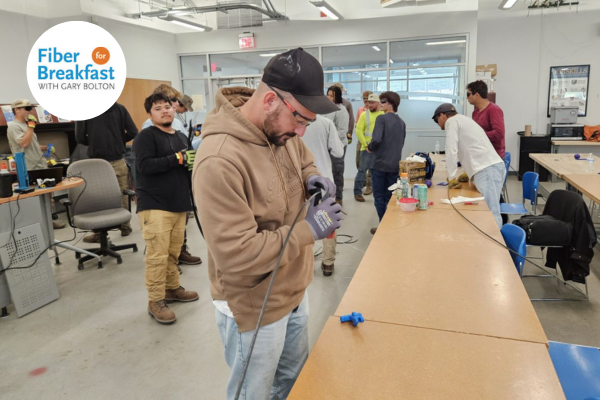FFB Week 46: Building Digital Inclusion in Rural America
Building Digital Inclusion in Rural America
This week’s Fiber for Breakfast, featured Dr. Adam Dewbury, Ph.D. and Shaniqua Corley-Moore from The Center on Rural Innovation (CORI), who joined Gary Bolton to discuss The Practitioner’s Guide to Rural Digital Inclusion. The conversation explored how communities can move beyond simply connecting residents to broadband and ensure they have the skills and support to use it meaningfully.
Dr. Dewbury explained that while broadband access in rural areas has expanded significantly over the past decade, “access does not equal inclusion.” He noted that 92% of jobs today require some level of digital skill, and workers with at least one digital skill earn 23% more than those without. “Broadband is not a luxury, it’s a necessity, and so is knowing how to use it effectively,” he said.
Corley-Moore, who leads CORI’s workforce development initiatives, described how her team partners with community leaders, employers, and training providers to help rural residents build technology skills and connect to remote and digital jobs. “Once we connect people, what happens next?” she asked. “Digital inclusion is all about helping people use that connection to learn, work, start businesses, and participate in the digital economy.”
She emphasized that distributing devices or setting up Wi-Fi hotspots alone doesn’t close the gap. Programs see the most success, she said, when equipment is paired with hands-on learning and personalized technical support. Efforts like Seattle’s Digital Bridge Project demonstrated that ongoing mentorship and locally tailored instruction are key. “One size does not fit all,” she said. “Each community has its own rhythms, challenges, and strengths.”
The conversation highlighted several groups that face unique barriers to inclusion—low-income households, older adults, veterans, and rural women. Dr. Dewbury pointed to the loss of the Affordable Connectivity Program as a setback for many families who depended on it to stay online, while Corley-Moore shared examples of programs embedding digital navigators in trusted spaces like libraries and clinics to build confidence and long-term participation.
In closing, both guests agreed that digital inclusion requires more than broadband—it takes community-based training, trusted local partners, and collaboration with providers. “Connectivity is the prerequisite,” Dr. Dewbury said, “but it’s people on the ground who turn that connection into opportunity.”
Click here to watch the full interview.
Click here for the slides presented.



